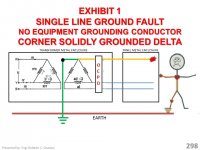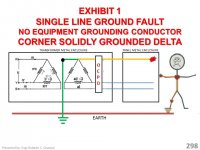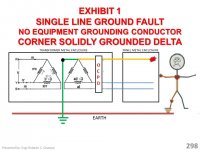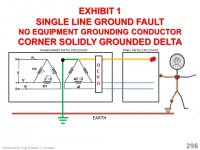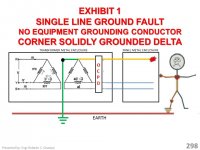At low voltages, those below 600V, the earth is considered a poor conductor and therefore incapable of conducting enough current to reliably operate an OCPD as small as 15A.
IEEE80 applies to grounding in substations, where voltages exceed 2400V, and the earth is considered a conductor capable of conducting current.
An equipment bonding conductor's primary purpose is to bond conductive sources together in order to reduce touch potential between surfaces.
Electrocution can occur at extremely low voltages, typically over 48V, dependent upon several factors including the health of the individual.


